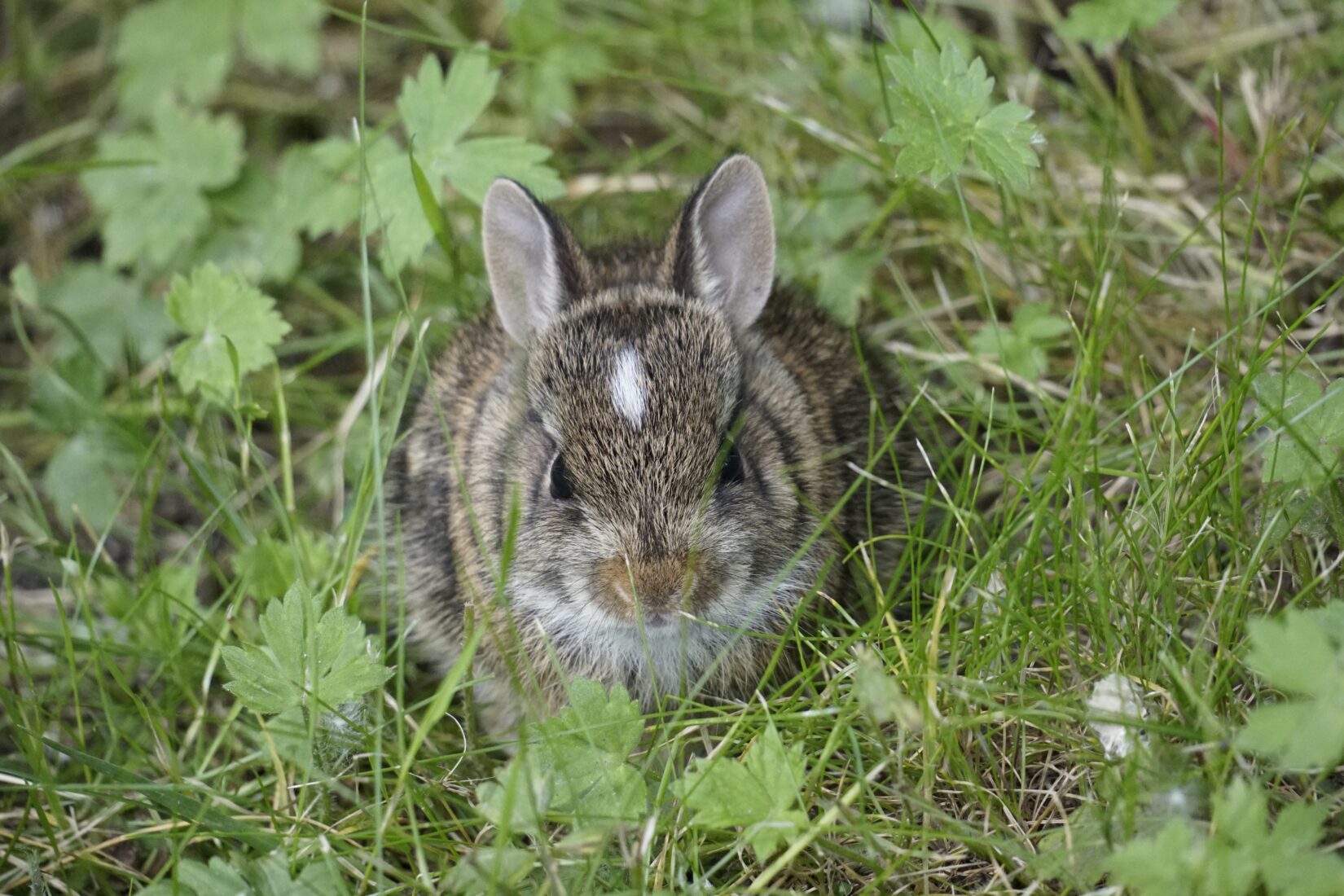Know your wild neighbours
It is typically illegal to disturb a bird’s nest with eggs or chicks inside. The best solution is to wait a few weeks until the babies grow up. If there is a nest in an area that causes problems (above a building entrance, in a vent) you may need a permit from Environment Canada to move the nest legally.
For species-specific information on managing birds, read our best practices. If you have more questions about a nest of birds, call the BC SPCA Animal Helpline at 1-855-622-7722 for advice.
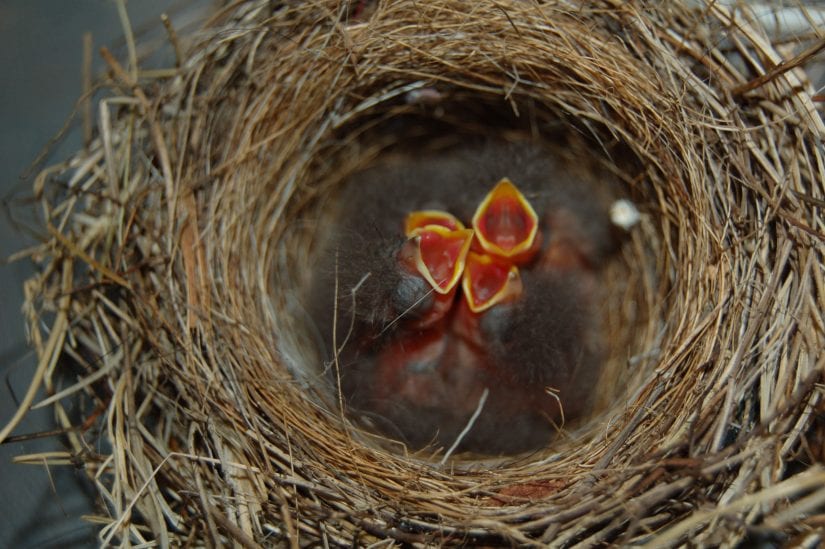
When young crows are learning how to fly, they may spend up to a week on the ground building up their flight muscles. The parents will watch from close by and try to protect their young – sometimes dive-bombing people who get too close. Unless the young crow is hurt or in a dangerous place, you can leave the crow alone.
If you watch and listen, you’ll hear the young crows begging for food and see the parents come down to care for them.
Avoid walking near the fledgling crow, keep pets on a leash and warn others in the area. If you have to pass through, carry an open umbrella as an extra barrier. Don’t worry – the parents will leave you alone as soon the young crow can fly away with them.
Read more about why crows attack and what you can do to protect yourself.
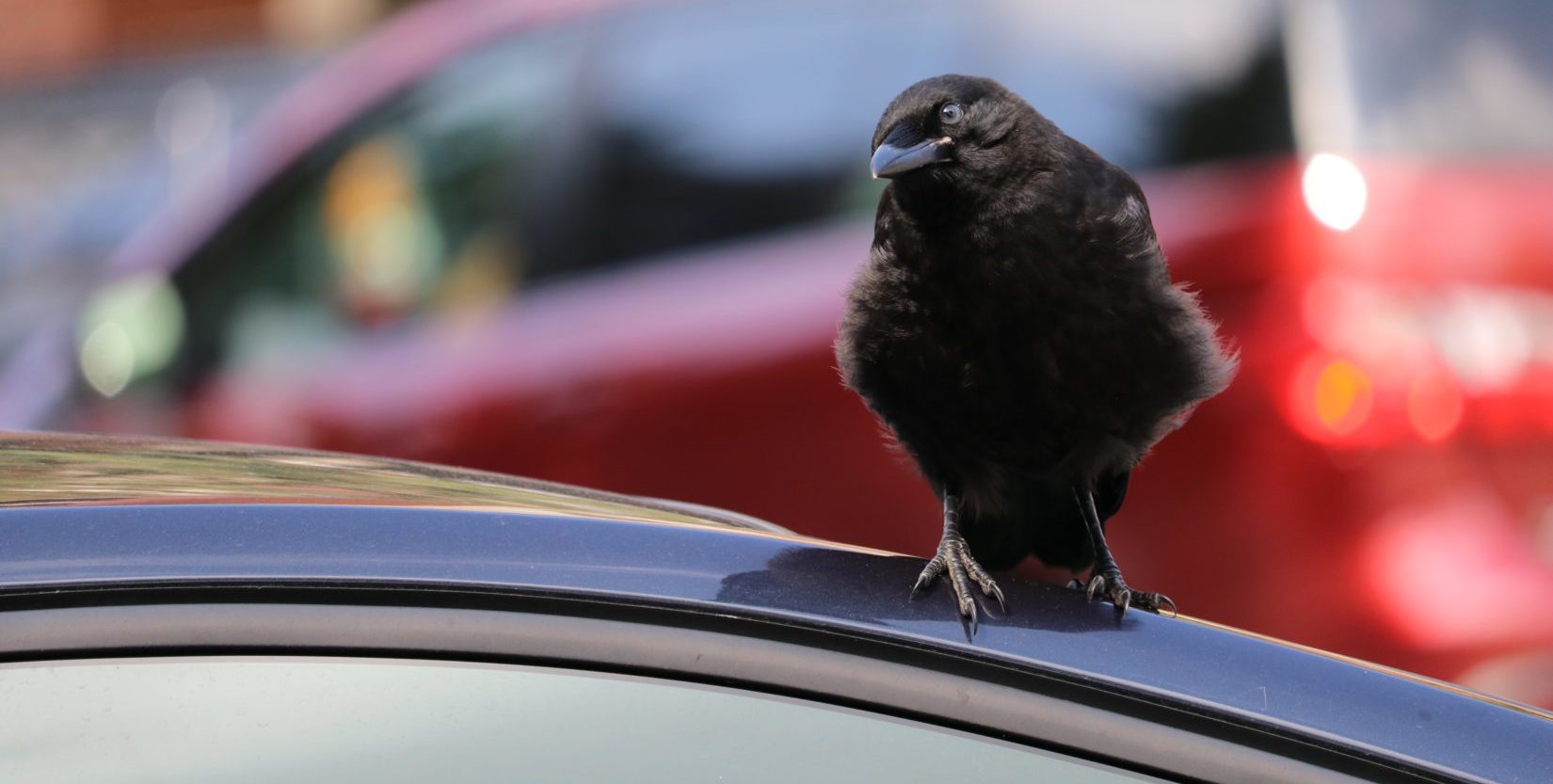
Coyote sightings in the city are normal, even during the day. You can help prevent conflicts by respecting their space and being a responsible pet guardian. Feeding coyotes causes them to lose their healthy fear of people – keep your garbage secure and don’t leave food outdoors.
If you see a coyote, scare them away by yelling, stamping your feet and waving your arms. Make lots of noise and try to look big. This may feel silly, but will help the coyote avoid problems in the future.
If pets can’t be kept indoors, make sure they come in at night to keep them safe.
Report a coyote sighting in Metro Vancouver or read more about coexisting with coyotes. Call the Conservation Officer Service at 1-800-663-9453 to report an aggressive or threatening coyote.

Ever wonder how to tell ducklings and goslings apart? At first glance they look similar, but they have distinct differences in colour and size. Mallard ducklings are much smaller than Canada Goose goslings. Mallard ducklings have dark chocolate brown and yellow markings with a dark line through their eye. Goslings are an olive-green and yellow colour, and do not have the dark line through their eye.

If you find a duckling or gosling wandering alone, with no adults or other babies nearby, they need help. Contact your local wildlife rehabilitation centre or our Animal Helpline at 1-855-622-7722.
Seeing a bear from a safe distance can be a thrilling experience, but what do you do in a surprise encounter with a bear?
Bears are omnivores that eat mostly berries and fish. Their habitats often overlap with ours in places like parks, resorts, hiking trails, or simply our backyards. Bear attacks are very rare – most of the time, they are happy to go unseen by people and will move along on their own. They can lose their healthy fear of people if we’re not careful with our food and garbage, or they may feel threatened if people come too close to their babies.
If you encounter a bear in the wild or in the city, remember to:
- Stay calm and back away slowly – do not run, climb a tree or make any sudden movements or loud noises, back away and give the bear plenty of space so they can move on
- Never feed a bear – bears used to being fed by humans can lose their fear of people and lead to unwanted conflicts and aggression
- Make yourself look big – stand tall or stay together in a group, do not kneel down
- Keep children and pets close – pick up small children and pets so you know where they are while watching the bear
- Don’t make eye contact with the bear – they may see this as a threat or a challenge
- Move indoors – if possible, move indoors and bring children and pets with you
- Report aggressive or threatening encounters by calling the Conservation Officer Service at 1-877-952-7277
Mother bears are protective of their young, so do not approach a baby bear, as mom will be watching from close by. Never try to out-run a bear or climb trees to escape.
Read more about living with bears in B.C.
Black bears vs. grizzly bears
B.C. is home to two kinds of bears – black bears and grizzly bears. Despite their name, black bears can be black, brown, silver, cinnamon or even white (called “Kermode” or “spirit” bears). They are adept tree climbers with large ears, short claws, a long nose, and don’t have a shoulder hump like grizzly bears. Black bears are the most common type of bear near B.C.’s largest cities.
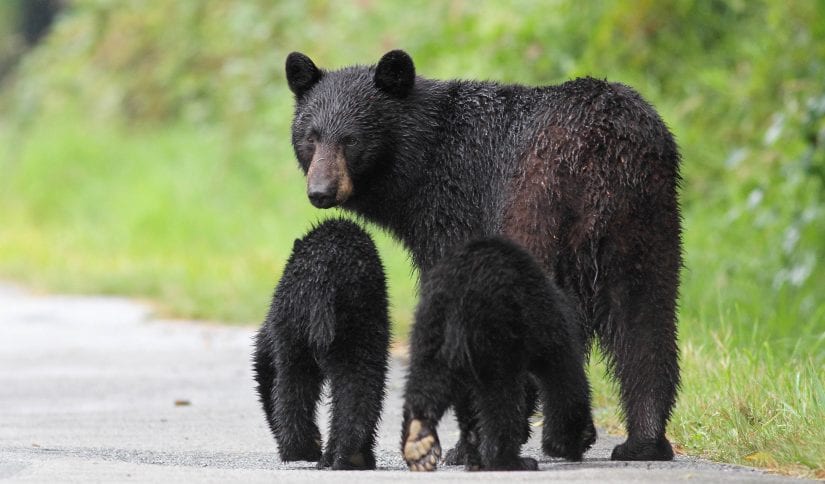
Grizzly bears are sometimes called brown bears, but they can also be black, brown, or blond. They have relatively small ears, long claws, a dish-shaped face, and have a distinct shoulder hump. Grizzly bears generally live in rural and remote areas of B.C. and thrive in undisturbed habitats.

Cougars are found throughout much of B.C. and are also known as mountain lions or pumas. Cougars are generally very secretive and rarely seen. However, cougars may occasionally pass through urban settings, or when young cougars leave their parents, they start looking for their own sources of food and places to live. Sometimes they end up in urban areas, parks or hiking trails.
Prevent problems with cougars
If you know cougars are active in your area, follow these tips to keep pets safe:
- Before letting dogs into your yard, turn on the lights and make some noise – check to make sure there aren’t any unexpected animals in your yard
- Keep dogs on leash and stick to well-lit areas when walking dogs at night – avoid dark, forested wildlife areas after sunset
- Keep cats indoors, or in secure outdoor enclosures – at minimum, make sure cats come in at night
What to do if you see a cougar
Although they are skilled predators, cougar attacks are rare. However, if you see a cougar in the wild or in the city, stay calm and follow these steps:
- Make yourself look big – stand tall, raise your arms and spread your legs
- Maintain eye contact and don’t turn your head – stay focused on the cougar
- Make loud noises – yell, clap your hands, use a bear bell, or bang things together
- Don’t leave until the cougar leaves – be sure the cougar has moved on before you leave
If you have small children or a dog, pick them up or keep them close in front of you. This may feel counter intuitive, but this way you can maintain control and face the cougar. A child or dog behind you may try to run away or divert your attention from the cougar. Act like you are bigger and stronger than the cougar so they will see you as a threat.
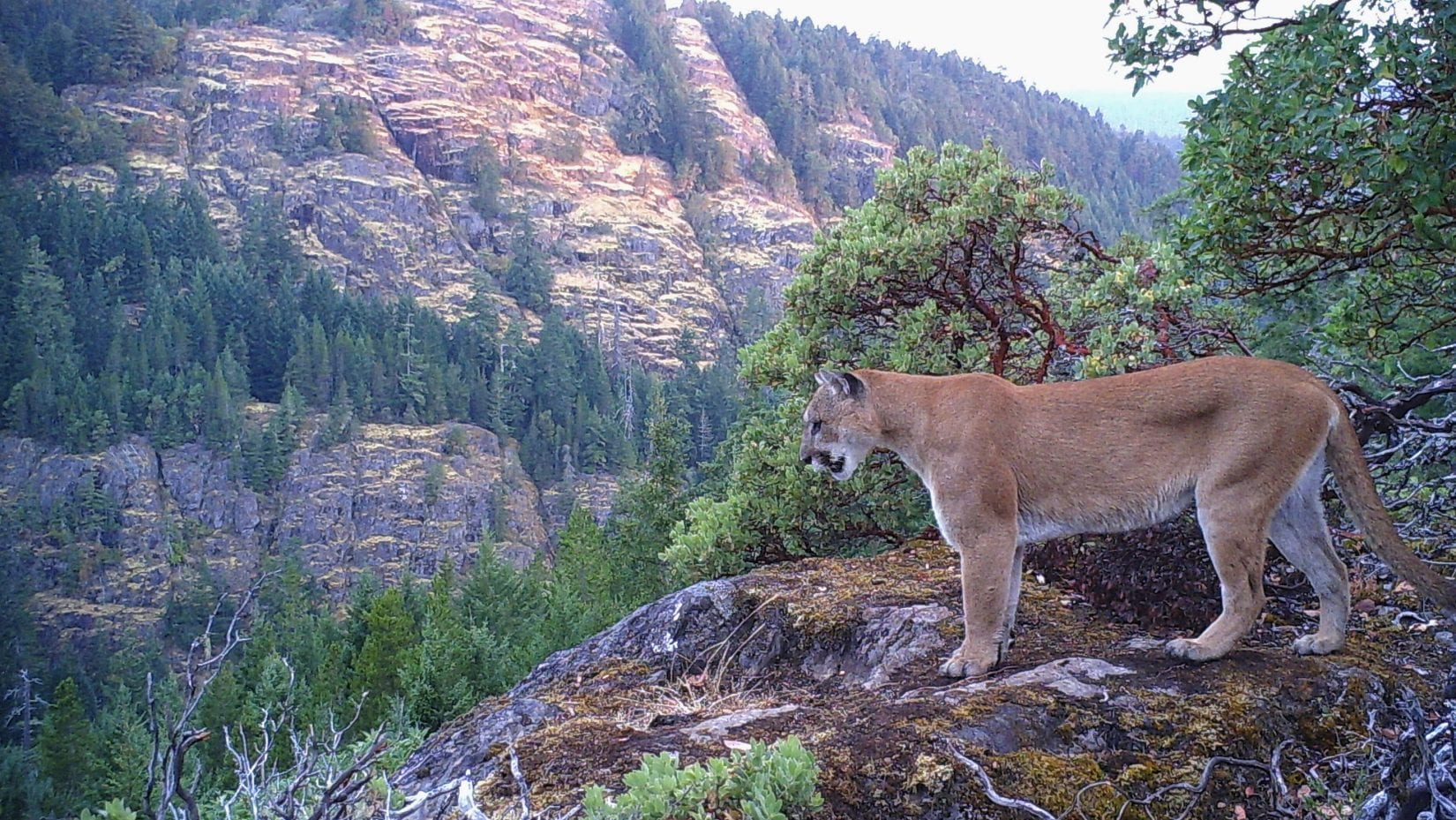 Photo credit: Gary Schroyen
Photo credit: Gary Schroyen
Ducks sit on their nest for three to four weeks before the babies hatch. To prevent the babies from hopping into the pool, cover the pool a few days before you expect the babies will hatch. The babies are small and don’t have waterproof feathers, so they can get hypothermia or drown if left in the water.
If a baby duck or goose ends up in your pool:
- Toss floating objects, like flutterboards, in the pool immediately to give babies temporary resting places
- Make a ramp using foam pool floats, patio chair cushions, or a wooden plank. You can use an empty pop bottle tied to the underside to help it float
- Use a pool skimmer to herd babies towards ramps, but don’t chase them. Chasing causes more stress and will exhaust the babies
- Open the gates to the pool area so the family can move out and find a better water source
If you need further advice on a nesting duck or goose family, call our Animal Helpline at 1-855-622-7722.

Crows and ravens can be hard to tell apart, especially from far away. Crows are smaller than ravens – they have a wingspan of about 92 cm, compared to a raven’s 117 cm.
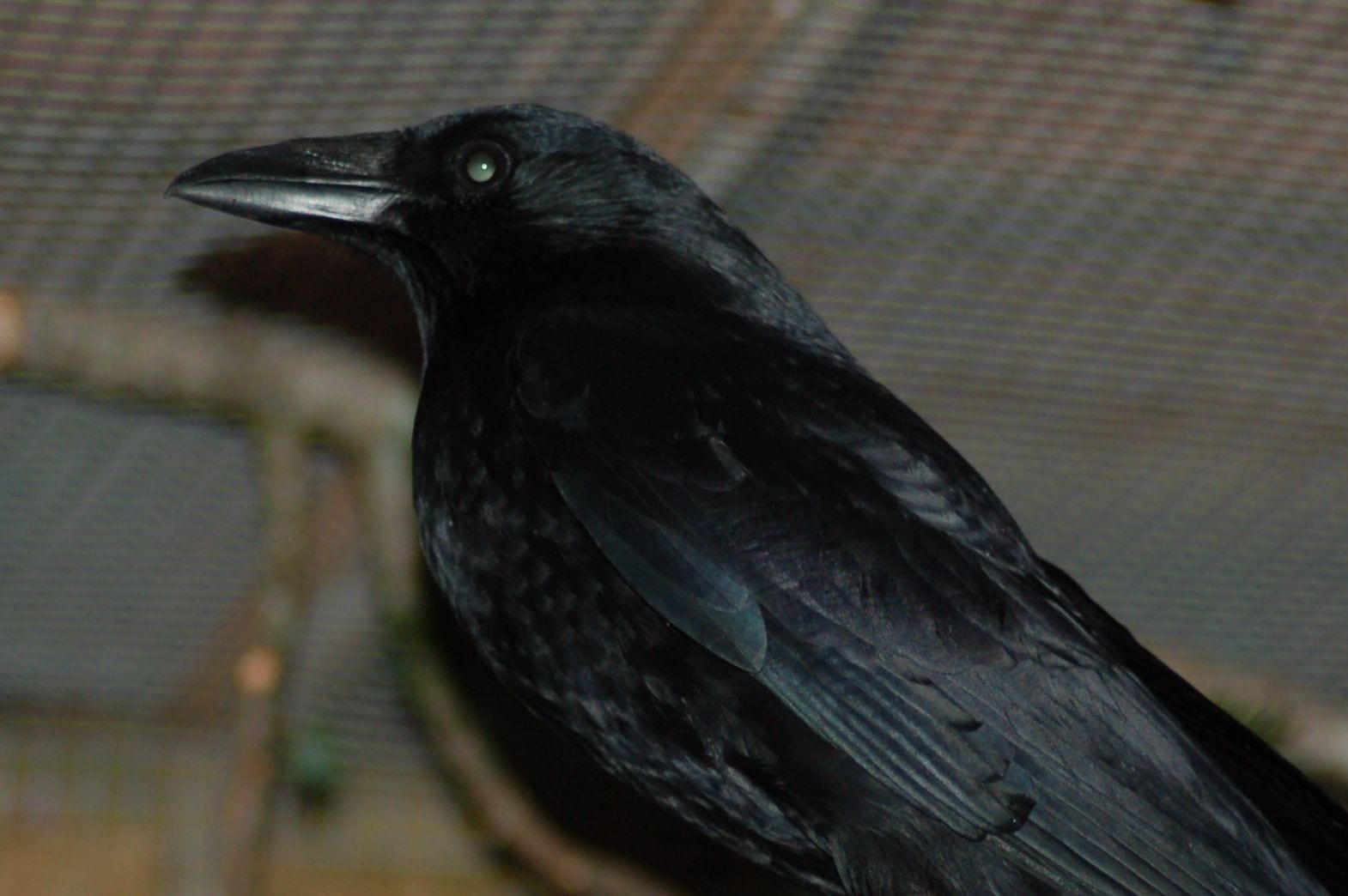
Crows
Smaller, straight beak
Fan-shaped tail
Characteristic “caw”
~92 cm wingspan
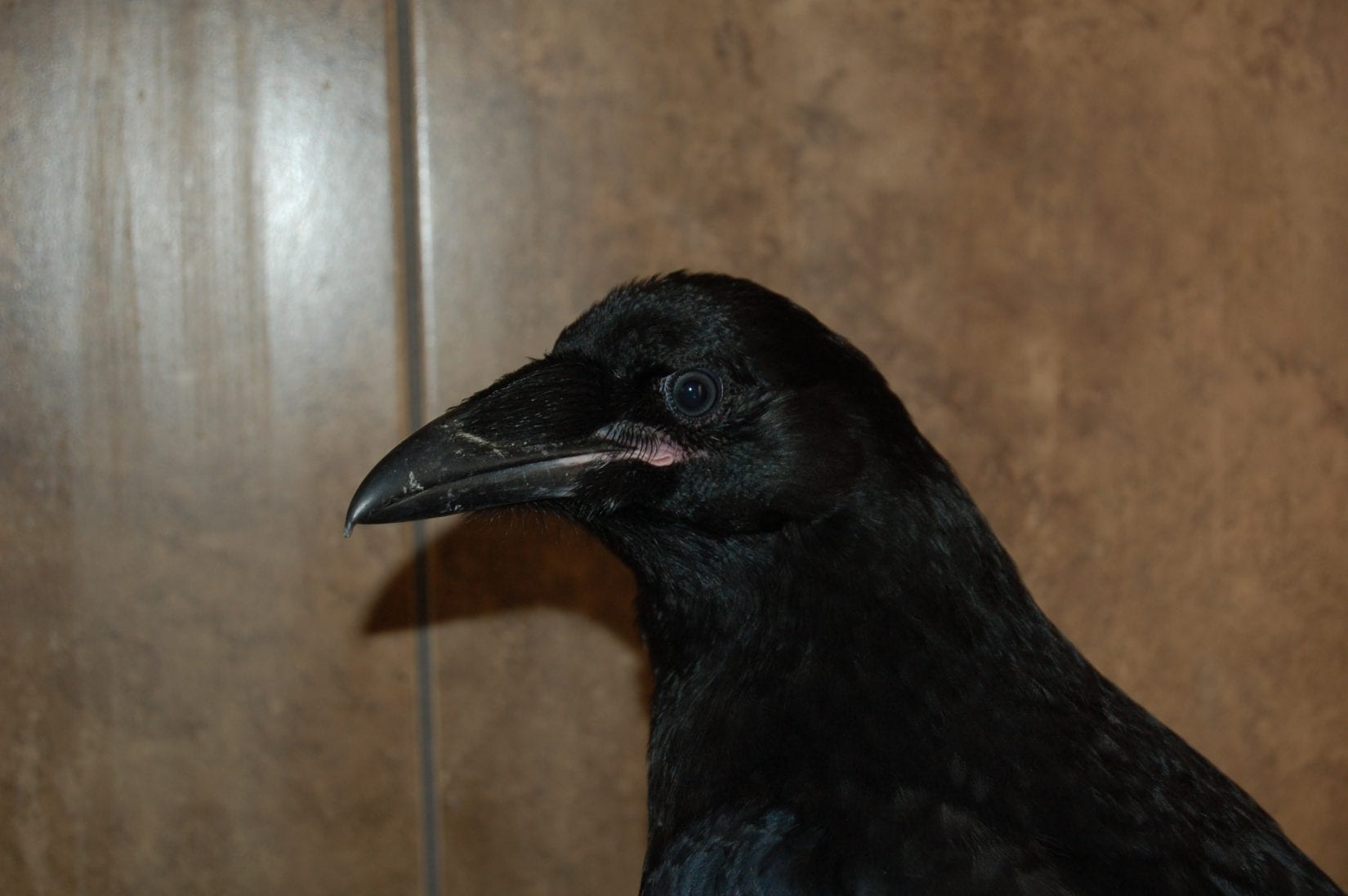
Ravens
Large, thick, rounded beak
Diamond-shaped tail
Deeper “croak”
~117 cm wingspan
Exotic animals are wild animals from other countries, but wild animals are indigenous to Canada. Exotic animals can be captured from the wild or bred in captivity. Exotic animals are often sold in the international pet trade.
The BC SPCA does not support keeping wild or exotic animals as pets, due to their unique physical and emotional needs. These animals often suffer in care because of their specialized needs.
Under provincial law, it is illegal to keep certain wildlife and certain dangerous exotic animals like tigers, primates or crocodiles, as they are designated as Controlled Alien Species.
Many cities also have exotic animal bylaws that make it illegal to keep some or all exotic pets. Check with your local municipality for a list of banned exotic animals.
Read more about exotic pets.
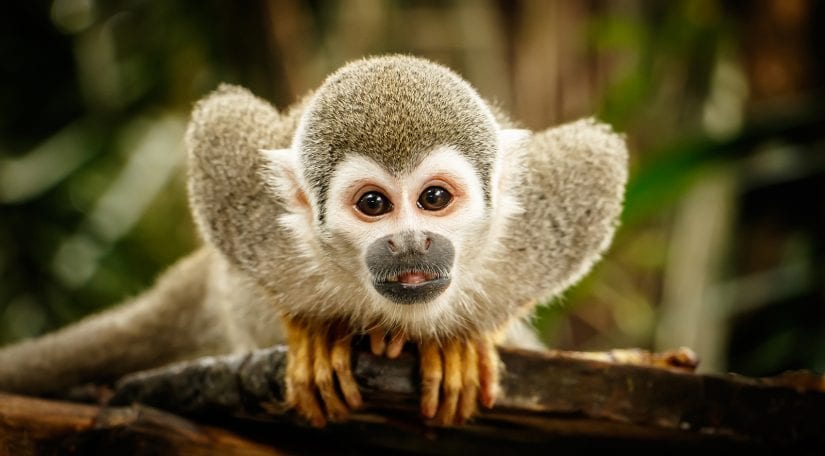
Just because you see a rabbit in the wild doesn’t mean they’re a “wild” rabbit. Free-living populations of domestic (feral) rabbits exist in urban areas — these rabbits are often abandoned pets or their offspring. The BC SPCA is opposed to the abandonment of pet rabbits and it is also illegal under the BC Prevention of Cruelty to Animals Act.
Rabbit hemorrhagic disease (RHD) has been found in feral rabbits on Vancouver Island and in the Lower Mainland – learn more about RHD.
How can I tell them apart?
Eastern cottontails are a wild species, with brown bodies and short, fluffy white tails. Cottontail rabbits are small (~1 kg) animals, with small ears and lean legs and bodies.
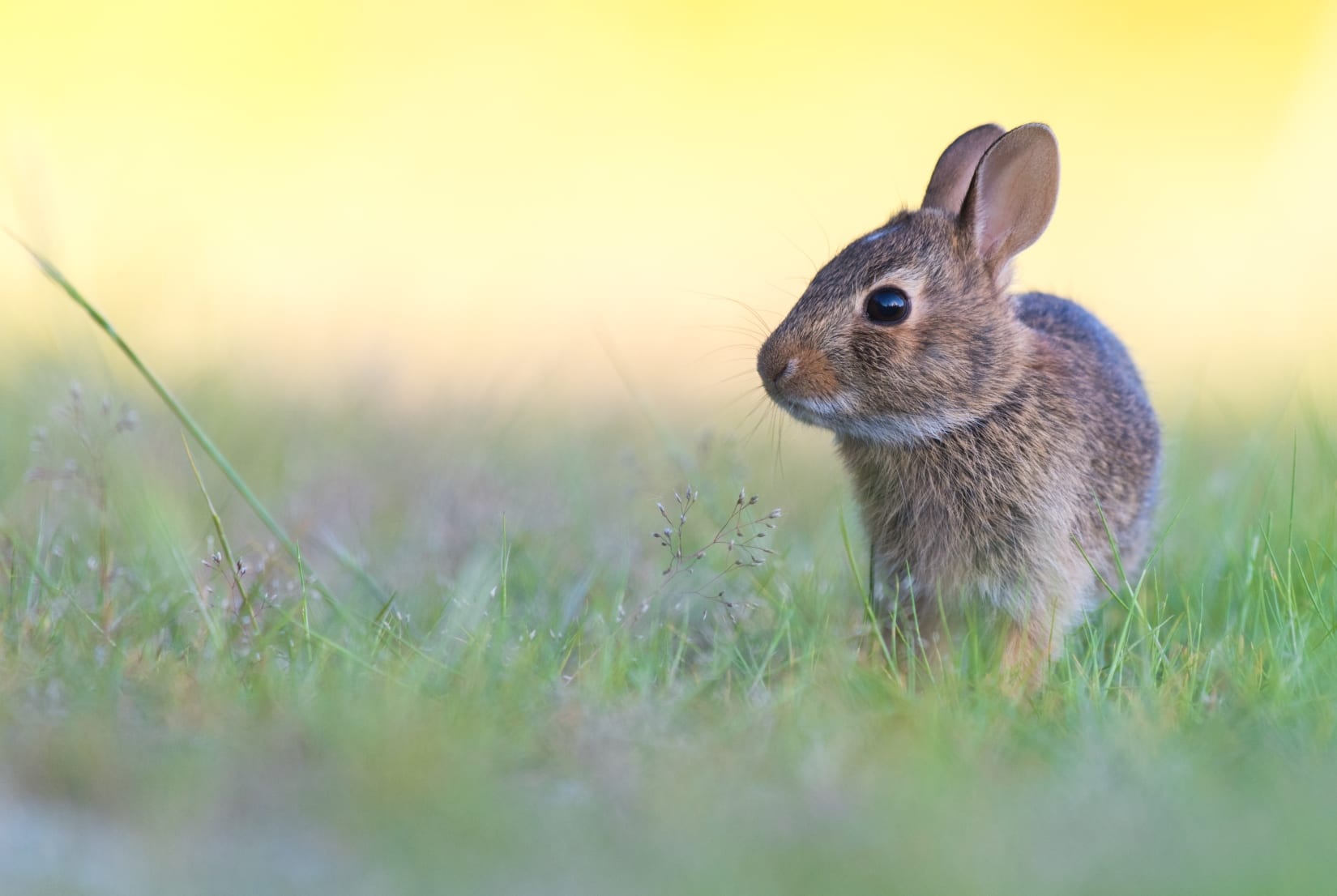
Domestic feral rabbits can be a variety of colours like black, tan, grey, white or spotted, and can look like Eastern cottontails at first glance – like this rabbit found living outdoors:
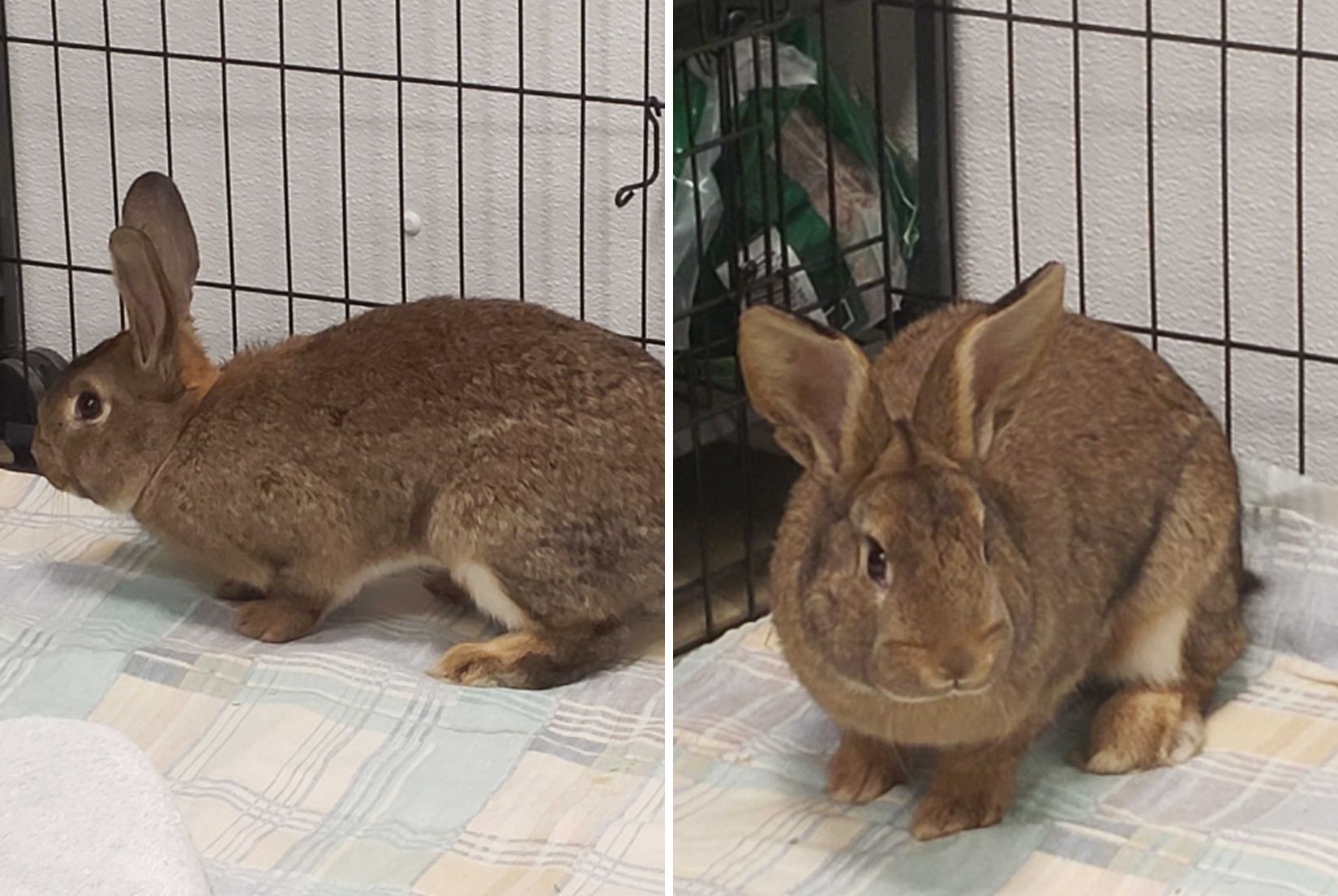
Feral rabbits are generally larger (1 – 2.5 kg), with big wide floppy ears and a more boxy face. Can you spot these differences in the photos above?
Both types of rabbits are attracted to sheltered, landscaped yards with dense shrub or undergrowth. Eastern cottontails don’t dig burrows, instead nesting in shallow depressions in grassy areas. Feral rabbits do burrow, and have a reputation for damaging lawns and gardens. For help addressing problems with feral rabbits, read our best practice sheet on rabbits.
Wild rabbits are normally solitary animals, usually seen on their own. Feral rabbits are social animals and may be seen in small groups.
Don’t judge a rabbit by their behaviour – domestic feral rabbits that aren’t used to people can be very fearful, and wild rabbits may be approachable if they’re sick or injured. In general, rabbits living in the wild are highly susceptible to stress – trying to capture or restrain them may cause death, a condition known as capture myopathy.
I found a baby rabbit
Baby rabbits found alone don’t always need help – it’s normal for a mother rabbit to leave her babies hidden in the nest for long periods of time. The mothers will come back only a few times a day to feed the babies, who wait quietly while hiding from predators.
If you’re unsure if they need help, or the babies (and any adults) are obviously injured (e.g., bleeding, broken limbs), check our webpage for more information or call the BC SPCA Animal Helpline for advice at 1-855-622-7722.
